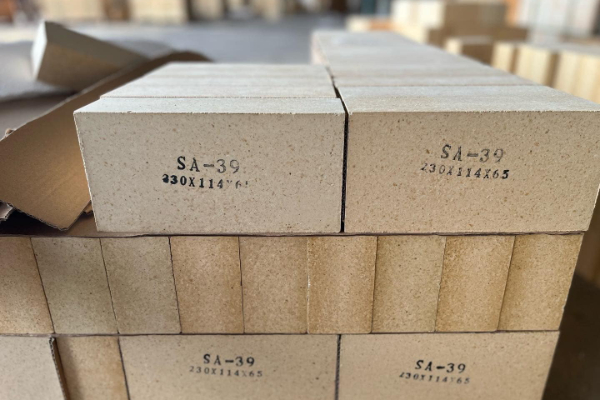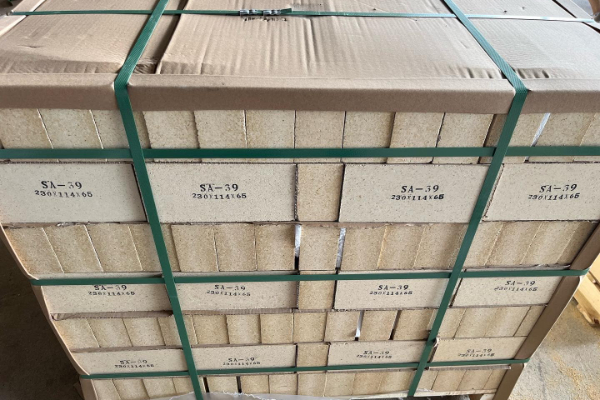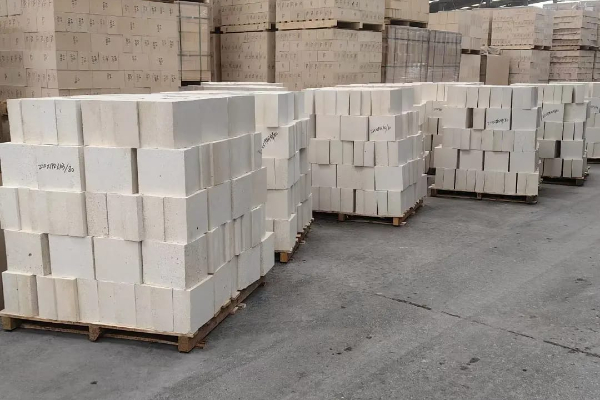Which kilns need to use andalusite refractory bricks?
Andalusite brick is a high-quality refractory material, the main component of which is andalusite (Al2SiO5). Its unique physical and chemical properties give it excellent refractoriness and stability in high-temperature environments, so it is widely used in various kilns. The following are the applications of bata andalusite in different kilns:
Andalusite bricks used in hot blast furnaces

The checker brick load in the middle of the regenerator of the hot blast furnace is relatively high, biasanya >9m, and can reach more than 15m for large blast furnaces. Andalusite bricks or low creep high alumina bricks with andalusite should be selected.
The ceramic burner of the hot blast furnace is prone to cracking and peeling due to large and frequent temperature fluctuations during use, which is a weak link affecting the longevity of the hot blast furnace. Andalusite-based refractory materials should be used.
The refractory materials lined with hot air ducts are easily damaged by thermal stress, especially in the hot air outlet, the three-way junction of the duct connection, the elbow, and the air supply branch pipe. Pada masa ini, it is mainly built with andalusite bricks, and some people use low-creep castables containing andalusite instead of fired bricks.
Anode baking furnace uses andalusite refractory bricks

The flue wall of the carbon anode baking furnace mainly uses clay bricks with an andalusite matrix, and the reason is closely related to the alkali resistance of the matrix part. The application of andalusite fine powder reduces the amount of liquid phase generated by sodium vapor (from the recycled anode) during the erosion process, because the liquid phase is confined to the continuous mullite network, and it is difficult for the sodium element to penetrate directly, thus avoiding the destruction of the microcrystalline mullite structure. This is not the case with clay. The needle-shaped mullite is wrapped by the liquid phase, and the sodium element can penetrate directly into the liquid phase. This is also the reason why the clay matrix has poor corrosion resistance to sodium vapor.
Lining material
After experimental comparison, the slag resistance properties of white corundum, andalusite, tabular corundum, bauxite, and clay were compared. In the case of periodic temperature changes (1200~1600℃) and periodic updates of corrosion slag (Al-killed steel), andalusite bricks have the best anti-penetration type.
In order to solve the problem of cracking the tundish lining during use, a bauxite-andalusite low-cement self-flowing castable was developed and industrial tests were conducted with remarkable results. The introduction of andalusite improves the spalling resistance of aluminosilicate low-cement castables during high-temperature use, which is beneficial in extending the service life of the castables.
Other furnaces

Andalusite is also commonly used in desulfurization spray guns, aluminum melting furnace and insulation furnace linings, cement kiln mouth and preheater, ceramic kiln furniture, memimpin, and zinc smelting closed blast furnace full lining, alumina-based spray coating for blast furnace gunning, liquid slag gasification furnace lining, COREX lining, dan lain-lain.
 Kilang Refraktori Rongsheng
Kilang Refraktori Rongsheng
WeChat
Imbas Kod QR dengan wechat